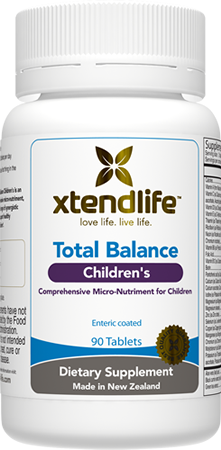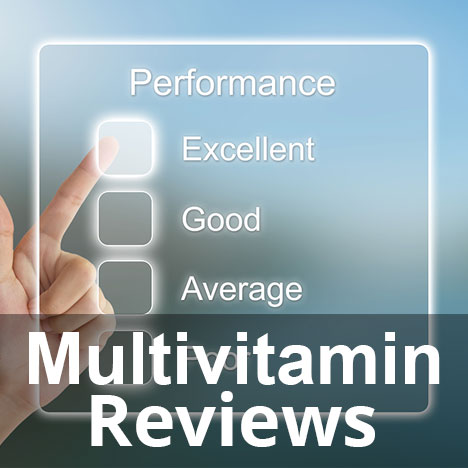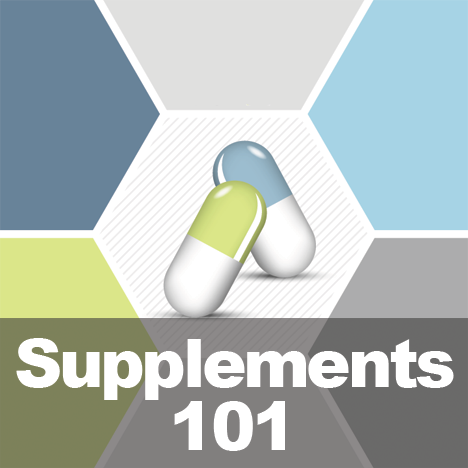 Providing the ideal nutrition for your child 365 days a year poses a challenge equally daunting as it is to do so for yourself. Understanding the ideal amounts of nutrients that your child needs daily depending on their sex and and age, is an important first step in strategizing where there might be nutritional gaps that may be occurring in their daily diet that can be addressed with supplementation. Below, we are going to walk you through the different stages of child development and the nutritional needs that support those periods with recommendations of the best multivitamins for children.
Providing the ideal nutrition for your child 365 days a year poses a challenge equally daunting as it is to do so for yourself. Understanding the ideal amounts of nutrients that your child needs daily depending on their sex and and age, is an important first step in strategizing where there might be nutritional gaps that may be occurring in their daily diet that can be addressed with supplementation. Below, we are going to walk you through the different stages of child development and the nutritional needs that support those periods with recommendations of the best multivitamins for children.
INFANTS (needs for Lactating Mothers)
Here we are going to pick-up where our “Prenatal Nutritional Needs” left off. Your child is no longer in uterine, and instead they are now you’re new smiling bundle of joy! Should you be adjusting your nutritional intake as you breastfeed?
If a breastfeeding woman is consuming a balanced diet of 2,700 calories a day on average, than the general consensus is that she need not worry about taking additional supplements in order to support the nutritional content of her breast-milk, ie her child’s nutritional intake. This is mostly due to the fact that the woman’s body makes supplying the optimal nutrition to her newborn child it’s top priority. Her body makes sure that the breast milk it produces has all of the right levels of what is most essential to the baby’s development, even if this means stealing from Peter to pay Paul.
In order to best support the health of your newborn child and yourself, you may want to consider being mindful about how much you consume of calcium, magnesium, zinc, and folate. These specific nutrients will never be deficient in your breast milk ( if you are not malnutritioned, and are consuming the right amount of calories from a balanced diet) but you could be needing more for your body’s own personal use. The recommended amounts, if one chose to suppliment for these nutrients, while breast feeding are as follows:
Recommend Daily Amount for Lactating Females
zinc: RDA 12 milligrams a day – approx. supplemental amount 3-6 mg a day
calcium: RDA 1,000 mg a day – approx. supplemental amount 300-500 mg a day
magnesium: RDA – 300 mg a day – approx. supplemental amount 100-150 mg
folate: RDA – 500 mcg – approx. supplemental amount 200-250 mcg a day
Best Multivitamins for Children: What to Look For
-
TB Children’s
 Formulated with a customized cell fuel for growing minds and bodies, Xtend Life Children’s specifically targets skeletal and neurological growth while focusing on nutrients often lacking in picky eaters.
Formulated with a customized cell fuel for growing minds and bodies, Xtend Life Children’s specifically targets skeletal and neurological growth while focusing on nutrients often lacking in picky eaters.
Buy Here
SMALL CHILDREN
Ideally, you will want the majority of you child’s nutrition coming from a balanced and healthful diet, just as you would want for yourself. But, there are times when that becomes a case of wishful thinking. Traveling, hectic schedules, and picky eating habits are among the things that can stand in the way of being able to have your child eat the healthful non-processed diet that is ideal, and at those times we often turn to fast food, processed snacks, or routine meals that may not be offering the nutritional diversity that your child really needs on a daily basis. This is when multivitamins for children can help fill in the gaps in order to prevent any deficits being formed during your child’s important formative years.
The most influential nutrients during this time of your child’s life are:
Vitamin A – supports healthy growth and repair of both soft tissue and bones. This is a fat soluble vitamin that can become toxic if consumed in too high of quantities. Taking that into consideration, we recommend being very cautious, and supplementing in only low doses in order to support days when consumed nutrition is not ideal, such as 100-150 mcg a day
Vitamin B – this includes the whole family of B vitamins (B2, B3, B6, and B12) which play a substantial role in the body’s cellular metabolism, which in turn affects all of the body’s major functions.
Vitamin C – Plays an important role in the health of your child’s connective tissues, like muscle, tendons, and skin. This affects immunity, and also functions as an powerful antioxidant. Vitamin C is a water soluble vitamin so there isn’t as much of a concern about getting “too much” Vitamin C, but the daily total recommended amount (including diet and supplementation) for small children is 25mg.
Vitamin D – supports proper bone and tooth development. The best source is sunlight (approx. 15 min of skin exposure a day) But if your child is not able to receive adequate daily sun exposure then it is recommended they consume at least 600 IU of a Vitamin D supplement.
Calcium – essential to bone growth, calcium is also an important part of proper nerve and muscle function, which is also why it plays an important role in heart function. We highly recommend that the majority of the 1,000 mg needed dialy come from a whole food source. But if supplementation is needed stick to a multivitamin that has been derived from whole food sources and that only has 50-100mg of calcium. Too much could lead to constipation and/or other health concerns.
Iron – is needed in order to grow healthy red blood cells and circulate oxygen throughout the body. But it is important to be very conservative in any supplementation of Iron you may incorporate in your child’s diet because it is a vitamin that can be toxic in extremely high levels. a good amount of iron to be included in your multivitamin is approximately 3mg.
ADOLESCENT CHILDREN
Many people think of gestation and the first 4 years of a child’s life as the most pivotal when it comes to development. While it is true that these periods are very important for your child, their development is not over, and it truly has profound progress to be made as they continue to reach pre-pubescence and adolescence. 45% of your child’s peak bone mass is formed during the years of their adolescence. This brings us to our first nutrient that studies have shown most adolescents are not consuming enough of through their diet alone.
CALCIUM
Once your child is 17 years old they have developed 90% of the bone mass that will carry them through the rest of their life. That means how much osteoporosis or fractures affect them when they are 90 years old all depends on the amount of proper nutrients, particularly calcium, they consume during the ages of 9-17 years old. This time becomes an even more interesting challenge as a parent, because as your child become more independent you will naturally have less constant control of what food choices your child is making on a daily basis. Being sure to have your adolescent include a whole food multi vitamin can be a very valuable tool in ensuring their health for many years to come. Look for a multi-vitamin that comes from whole food sources and include roughly 500 mg of calcium. Granted, the very best you can do is educate yourself and pass on the nutritional awareness to your children, helping them to view healthful eating as a delicious and satisfying part of their life. Supplement should always be view as just that: A supplement to a healthy, balanced, and diverse diet. Taking that into consideration, animal milks have often been marketed as the primary source of calcium in the western diet. This does not serve the many individuals who happen to be lactose intolerant, vegan, or who simply do not enjoy drinking full glasses of cow’s milk at every meal. For all of these individuals, it is good to keep in mind that nut milk’s are an excellent source of calcium, as are dark leafy greens, and yogurt.
IRON
As with your child’s bone mass during adolescence, their entire circulatory system is massively expanding along with their bodies growth in size and development of their reproductive systems. A pivotal part of healthy circulation comes in the form of adequate amounts of oxygen being transported through the body via health red blood cells, which need iron in order to do so. Inturn, Iron is needed in increased volume in proportion to the volume of blood and muscle your child is developing during these pivotal years.
Having said this, Iron should not be approached in a “one-size-fits-all” way. Supplemental need varies greatly between adolescent males and adolescent females, and even more so if either of them happen to be a vegetarian or vegan. For males from 9-13 years old their recommended daily amount is 8mg, 11 mg if they are between the ages of 14-18 years old. But, studies have shown that 98% of the adolescent males studied naturally received their RDA of Iron through diet alone. Granted, if those young men happen to be vegetarian or vegan, their soul source of iron will be of the nonheme variety, which absorbs into the bloodstream at a lower rate them “Heme” which is found in animal meat sources. With that in mind it would be good to have a male adolescent who also happens to be vegetarian or vegan take a vegan multivitamin with sufficient amount of nonheme iron in it.
Adolescent girls are naturally going to need more iron than adolescent boys because of their menstrual cycle. 15 mg is the RDA of Iron for young women entering puberty, and studies have shown that only half of young girls are taking in enough iron through their diet on a daily basis. That means it is a very good idea to consider what your daughters daily diet consists of and how much Iron she might be consuming on a daily basis. If you come to realized that she is not consuming adequate amounts that it would be a good idea to have your pre-teen or teenage daughter incorporate an iron supplement to fill in her dietary gaps, particularly if she happen to also be maintaining a vegan or vegetarian lifestyle.
ZINC
Zinc is very important for adolescent children because it is a vital part of protein formation and gene expression which play an important role in their reproductive development.
It is important to note that Zinc and Iron compete for absorption. So be sure to try and not elevate either one to the point of consuming more than twice the amount of the other, otherwise it could lead to a deficiency in which ever one got the bum end of the deal. The RDA for zinc in children ages 9-13 years of age is 8mg, and the RDA for males 14-18 yrs is 11mg, while for females is 9mg. Please remember that RDAs or, Recommended Daily Amounts, include total dietary consumption, so please do not read those amounts as what you should be looking for on the back of a bottle.
VITAMIN A
Vitamin A is a big player in many of the bodies most important functions, including growth, reproduction, vision, and the immune system. The RDA (this includes all daily dietary intake) for Vitamin A in adolescent children is as follows:
Children ages 9-13 – 600 mcg
Boys ages 14-18 – 900 mcg
Girls ages 14-18 – 700 mcg
Vitamin A is a fat soluble vitamin, so it is possible to over-consume this nutrient. Much of our dietary intake of Vitamin A comes from fruits and vegetables that are orange or red in color, such as carrots, sweet potatoes, and tomatoes. Leafy green vegetables, such as spinach and kale have excellent amount of Vitamin A as well, as do many dairy and fortified non-dairy products. When you know your kids may not be taking in enough of these food in their diet, it would be a good idea to incorporate a whole food multi-vitamin that includes vitamin A. Be sure to have your child take the supplement with a snack or meal that includes a healthy fat source, as this will aid in the absorption process.
VITAMIN E
Vitamin E has garnered a solid reputation, after considerable clinical study, for being one of the most powerful antioxidants. Oxidization is the processes by which, the bodies cells are degraded by exposure to free radicals. As an adolescent’s body expands its mass, keeping all of its new cells as healthy and robust as possible is ideal. The RDA for Vitamin E for adolescents are 11 mg a day for ages 9-13, and 15 mg a day for ages 14-18. Studies have shown that 40% of adolescents in America are not consuming the recommended daily amount of Vitamin E and the majority of their intake is coming from fortified processed foods, like breads, cookies, margarine, and salad dressings. These are obviously not ideal sources of nutrition. Other more healthful foods which are extremely high in Vitamin E are tofu, sunflower seeds, spinach, almonds, and avocados. In order to supplement you adolescents intake of Vitamin E a whole food multi-vitamin is recommended when you confirm that they are not consuming enough of the right kind of foods on a daily basis.
VITAMIN C
There is no vitamin that has quite the cache and familiarity than that of Vitamin C. Even people with the most limited nutritional knowledge are aware of Vitamin C. What is often just thought of as a player in fighting a common cold, Vitamin C is far more wide reaching in its healthful benefits than many may realize. Supporting the synthesis of connective tissue, like collagen, Vitamin C secures its place as being an important part of an adolescent child’s accelerated development. Vitamin C also plays an important part in the production of white blood cells, which affects a person’s ability to defend themselves against viruses. The great thing about Vitamin C is that it is a water soluble antioxidant, so there should be no real concern of your child getting too much vitamin C, what ever their body doesn’t need it will pass via urination. Having them take a whole food multivitamin that includes Vitamin C in the form of ascorbic acid, which is best absorbed by the body is a very good idea.
FOLATE
Folate is truly a building block of life. It plays a pivotal role in communication of the bodies DNA and RNA with the proteins that helps shape the bodies cells. In other words, Folate helps the body know what kind of cells to make, where, and how much. This of course becomes increasingly important in times of increased development, such as puberty. Foods high in Folate are Dark Leafy Greans,, Asparagus, Lentils, and Beans. If you think you teenager is not eating enough of these kind of foods on a daily basis, it is a good ideal to incorporate a supplement form of Folate, at around 150 mcg per serving in a multivitamin (RDA is 300 mcg for this age group). This is when the importance of the supplement being from a whole food source really comes in, folic acid does not offer the same beneficial results that naturally occurring Folate does. Folic acid is a synthetic form of Folate, so be sure to pay attention to that when choosing which supplement to incorporate into your child’s diet.






